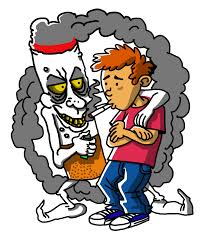Start your stop smoking plan with START
S = Set a quit date.
Choose a date within the next two weeks, so you have enough time to prepare without losing your motivation to quit. If you mainly smoke at work, quit on the weekend, so you have a few days to adjust to the change.
T = Tell family, friends, and co-workers that you plan to quit.
Let your friends and family in on your plan to quit smoking and tell them you need their support and encouragement to stop. Look for a quit buddy who wants to stop smoking as well. You can help each other get through the rough times.
s-media-cache-ak0.pinimg.co...
A = Anticipate and plan for the challenges you'll face while quitting.
Most people who begin smoking again do so within the first three months. You can help yourself make it through by preparing ahead for common challenges, such as nicotine withdrawal and cigarette cravings.
R = Remove cigarettes and other tobacco products from your home, car, and work.
Throw away all of your cigarettes (no emergency pack!), lighters, ashtrays, and matches. Wash your clothes and freshen up anything that smells like smoke. Shampoo your car, clean your drapes and carpet, and steam your furniture.
sp.yimg.com/xj/th?id=OIP.Ma...
T = Talk to your doctor about getting help to quit.
Your doctor can prescribe medication to help with withdrawal and suggest other alternatives. If you can't see a doctor, you can get many products over the counter at your local pharmacy or grocery store, including the nicotine patch, nicotine lozenges, and nicotine gum.
_____________________________________________________________________________________________________________
How to quit smoking: Identify your smoking triggers
One of the best things you can do to help yourself quit is to identify the things that make you want to smoke, including specific situations, activities, feelings, and people.
-KEEP A CRAVING JOURNAL
sp.yimg.com/xj/th?id=OIP.Me...
A craving journal can help you zero in on your patterns and triggers. For a week or so leading up to your quit date, keep a log of your smoking. Note the moments in each day when you crave a cigarette:
What time was it?
How intense was the craving (on a scale of 1-10)?
What were you doing?
Who were you with?
How were you feeling?
How did you feel after smoking?
Do you smoke to relieve unpleasant or overwhelming feelings?
Managing unpleasant feelings such as stress, depression, loneliness, fear, and anxiety are some of the most common reasons why adults smoke. When you have a bad day, it can seem like cigarettes are your only friend. As much comfort as cigarettes provide, though, it's important to remember that there are healthier (and more effective) ways to keep unpleasant feelings in check. These may include exercising, meditating, using sensory relaxation strategies, and practicing simple breathing exercises.
For many people, an important aspect of quitting smoking is to find alternate ways to handle these difficult feelings without smoking. Even when cigarettes are no longer a part of your life, the painful and unpleasant feelings that may have prompted you to smoke in the past will still remain. So, it's worth spending some time thinking about the different ways you intend to deal with stressful situations and the daily irritations that would normally have you reaching for a cigarette.
Coping with Cigarette Cravings in the Moment
Find an oral substitute
Keep other things around to pop in your mouth when cravings hit. Good choices include mints, hard candy, carrot or celery sticks, gum, and sunflower seeds.
Keep your mind busy
Read a book or magazine, listen to some music you love, do a crossword or Sudoku puzzle, or play an online game.
Keep your hands busy
Squeeze balls, pencils, or paper clips are good substitutes to satisfy that need for tactile stimulation.
Brush your teeth
The just-brushed, clean feeling can help get rid of cigarette cravings.
Drink water
Slowly drink a large, cold glass of water. Not only will it help the craving pass, but staying hydrated helps minimize the symptoms of nicotine withdrawal.
Light something else
Instead of lighting a cigarette, light a candle or some incense.
Get active
Go for a walk, do some jumping jacks or pushups, try some yoga stretches, or run around the block.
Try to relax
Do something that calms you down, such as taking a warm bath, meditating, reading a book, or practicing deep breathing exercises.

